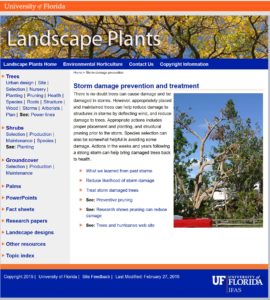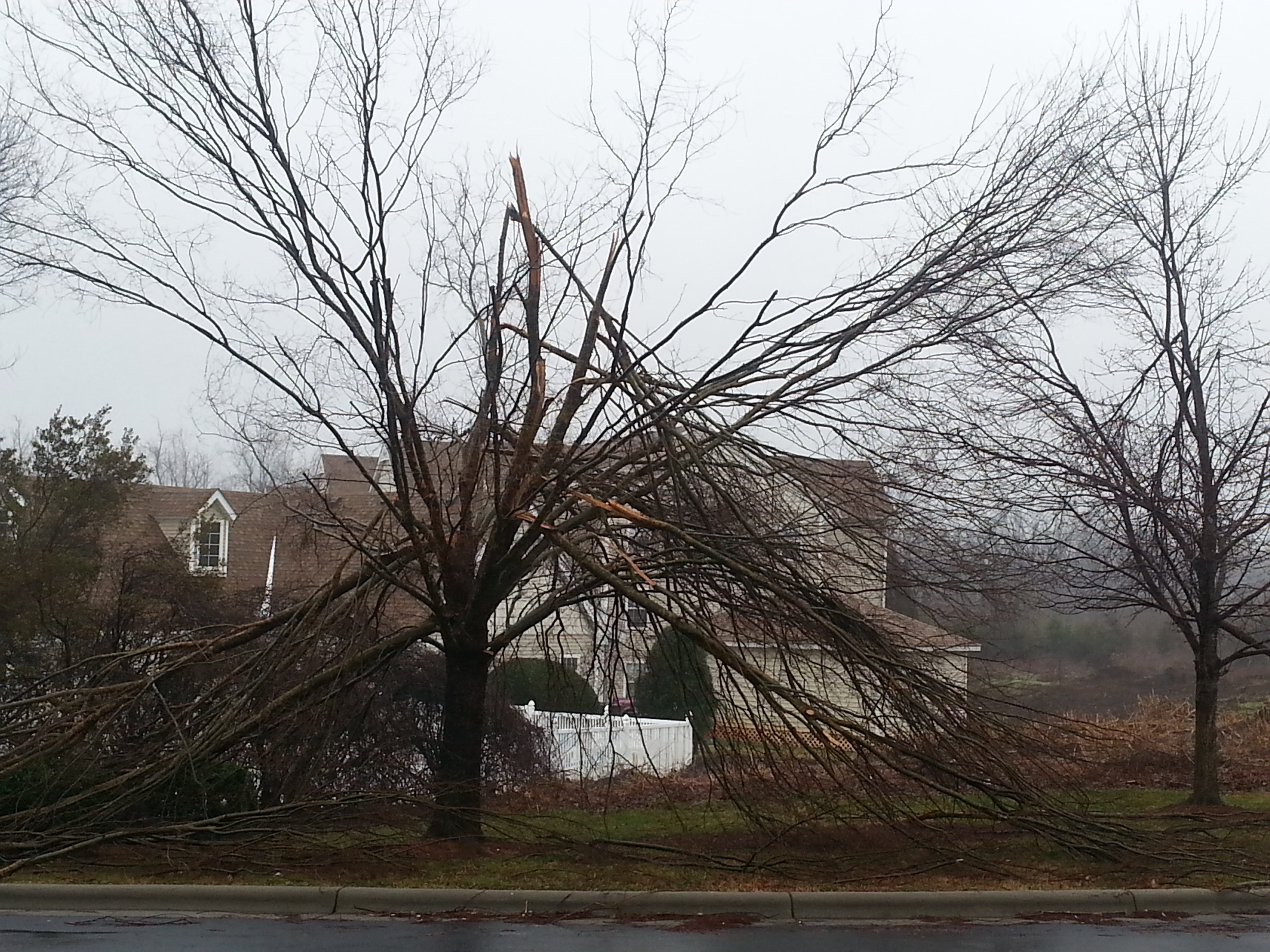Preventing and Managing Ice and Snow Damage to Landscape Plants
go.ncsu.edu/readext?1023689
en Español / em Português
El inglés es el idioma de control de esta página. En la medida en que haya algún conflicto entre la traducción al inglés y la traducción, el inglés prevalece.
Al hacer clic en el enlace de traducción se activa un servicio de traducción gratuito para convertir la página al español. Al igual que con cualquier traducción por Internet, la conversión no es sensible al contexto y puede que no traduzca el texto en su significado original. NC State Extension no garantiza la exactitud del texto traducido. Por favor, tenga en cuenta que algunas aplicaciones y/o servicios pueden no funcionar como se espera cuando se traducen.
Português
Inglês é o idioma de controle desta página. Na medida que haja algum conflito entre o texto original em Inglês e a tradução, o Inglês prevalece.
Ao clicar no link de tradução, um serviço gratuito de tradução será ativado para converter a página para o Português. Como em qualquer tradução pela internet, a conversão não é sensivel ao contexto e pode não ocorrer a tradução para o significado orginal. O serviço de Extensão da Carolina do Norte (NC State Extension) não garante a exatidão do texto traduzido. Por favor, observe que algumas funções ou serviços podem não funcionar como esperado após a tradução.
English
English is the controlling language of this page. To the extent there is any conflict between the English text and the translation, English controls.
Clicking on the translation link activates a free translation service to convert the page to Spanish. As with any Internet translation, the conversion is not context-sensitive and may not translate the text to its original meaning. NC State Extension does not guarantee the accuracy of the translated text. Please note that some applications and/or services may not function as expected when translated.
Collapse ▲
Preparing Landscapes for Snow and Ice
Snow in the Carolinas is often heavy, piling up on plants and sometimes breaking limbs and branches. What to do before the storm to minimize damage:
- Select resilient plants that are resistant to wind damage. The narrower the angle of attachment of a branch to the trunk, the more likely the branch is to break or split. Some trees naturally form narrow angles, making them extremely susceptible to falling damage from wind, snow, and ice. ‘Bradford’ pear is the classic example of a weakly structured tree prone to self-destruction in winter storms. Avoid planting these weak wooded trees that are more likely to be damaged in wind, snow, and ice: Leyland cypress, lacebark elm, Bradford pear, water oak, silver maple, green ash, willow, and pecan. Replace damaged trees with ones more resistant to wind and ice damage including crape myrtle, bald cypress, hickory, ironwood, ginkgo, and white oak.
- Tie up narrow, upright, evergreens with multiple leaders to prevent breakage and splaying. Ring the outside of the plant with rope or narrow strips of cloth or tie the main leaders together high up inside the shrubs. Be sure to remove the binding after the snow has melted. Arborvitae, upright junipers, Leyland cypress, and ‘Sky Pencil’ holly all can be disfigured or splayed under heavy snow loads. Consider replacing these plants with ‘Oakleaf’, ‘Nellie Stevens’ or ‘Needlepoint’ holly.
- Avoid using sodium chloride-based de-icing salts that can cause serious damage to both the roots and foliage of landscape plants within 30 ft. As snow melts, salt enters the soil, damaging both soil structure and plant roots. Salts can also be splashed onto the leaves of nearby evergreen plants by passing vehicles. If your evergreen plants are exposed to sodium chloride-laden spray, rinse the leaves with plain water as soon as possible after exposure when temperatures are above freezing. If salt washes off surfaces and soaks into the soil around salt-sensitive trees and shrubs, leach the soil by slowly saturating the area with plain water by allowing soaker hoses or drip irrigation to run in the area for two to three hours. Avoid landscape plants sensitive to soil-borne salt, including white pine, red maple, boxwoods, river birch, and pin oak. Plants resistant to salt damage. Products containing potassium chloride (KCl), calcium magnesium acetate (CMA), or calcium chloride (CaCl2) are much less likely to damage plants when properly used. Coarse sand and sawdust are simple, natural alternatives to de-icing chemicals. While they do not melt snow and ice, sand and sawdust will help provide traction on slick surfaces.
- Prune for structural strength and durability. Inspect and selectively prune young trees to promote good structure and strong branching to increase their life span and improve survival rates in future storms. A few well-placed cuts when a tree is young can make the difference between a few broken limbs and complete collapse later in life when the tree is weighed down under a load of snow.

Lucy Bradley CC0
Recovery from Snow & Ice Damage
- Remove snow from shrubs. Begin at the bottom of the plant, sweeping the snow off the branches with a broom. If you sweep from the top down, you are likely to rapidly increase the load on the branches below, which can result in more broken branches. If the snow is frozen onto branches and will not easily dislodge by sweeping, allow it to melt naturally. Don’t shake trees and shrubs to remove snow. For trees, be patient until the snow melts. You can do little to help trees weighed down by snow and ice. Trees and shrubs bent, but not broken, by the weight of snow and ice will often recover without special care.
- Assess damage. The tree will likely recover if only small limbs and twigs are damaged. If many large branches are damaged, the tree may be able to recover with conservative pruning and care, and time. Hire an ISA Certified Arborist to assess the damage and determine a plan of action. Young, recently planted trees that have fallen over can usually be saved. Cover any exposed roots immediately to protect them from drying out or freezing. Mature trees and trees with trunks over 10-12” in diameter that fall or have 1/3 or more of their roots exposed should be removed. Anytime you have a tree removed, replace it with a stronger wooded species. Most shrubs damaged by snow and ice can be severely pruned if necessary. Wax myrtles are particularly prone to breaking when weighed down by snow and ice but can be cut back to within a few feet of ground level and will regrow, usually within one or two seasons. This is also true for most broadleaf evergreen shrubs (camellias, azaleas, hollies) and deciduous shrubs (spiraea, butterfly bush, Knockout rose). Keep in mind spring-blooming shrubs cut back now will not bloom this year. Conifers (Thuja, juniper, cedars, arborvitae) that break apart in ice storms will not recover and should be removed.
- Prune & care for trees and shrubs damaged by ice
- A series of guides to explain when to prune, where to cut, what tools to use, and how much to remove.
- Before the Cut
- Tools to Make the Cut
- General Pruning Techniques
- How to Prune Specific Plants (a guide to pruning 75 common landscape trees, shrubs, and vines)
- A series of guides to explain when to prune, where to cut, what tools to use, and how much to remove.
- Avoid removing more limbs than necessary, reducing the tree’s ability to feed itself through photosynthesis. Trees may look uneven or out of balance immediately after pruning but will fill in within a few seasons. Help trees and shrubs recover from storm damage by applying a slow-release or organic fertilizer in spring (March-April). Water recovering trees and shrubs during dry spells this summer and fall.
- When to hire an arboristStay safe! Never cut limbs tangled in power lines – call the power company instead. Anytime removing a branch requires a ladder or a chainsaw, you should strongly consider hiring a tree care professional to do the job.
Storm Damaged Landscape Trees
- Additional Resources on Protecting Plants from Winter Storms:
- Protecting trees and shrubs against winter damage, Minnesota Extension
- Managing winter injury to trees and shrubs, Virginia Extension
- First aid for storm-damaged trees, Missouri Extension
- Winter Damage on Landscape Plants, the University of Maryland
- Covers ice and snow damage; symptoms of winter damage on evergreens; leaf scorch; salt damage; damage to new growth and blooms; frost cracks and sunscald; management strategies.
Additional Resources on Managing Salt
- Salt damage in landscape plants, Purdue Extension
- Minimizing de-icing salt injury in trees, University of Minnesota Extension
- Trees and shrubs that tolerate saline soils, Virginia Extension
- Protecting Evergreens from Ice and Snow, Clemson Univers
 This University of Florida Publication on Treating Storm Damaged Trees has great information on evaluating hazardous trees and pruning to restore damaged trees.
This University of Florida Publication on Treating Storm Damaged Trees has great information on evaluating hazardous trees and pruning to restore damaged trees.



